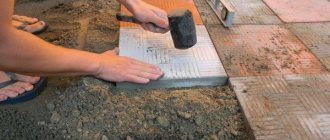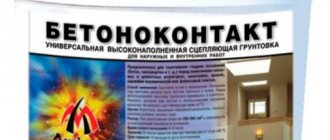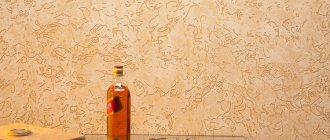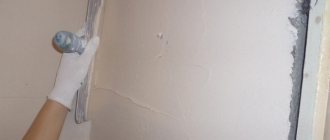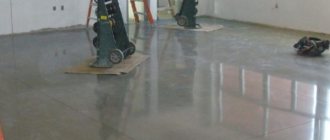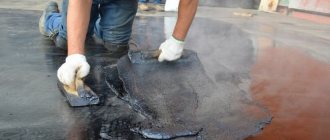Brick coating with varnish
To reliably protect the facing coating outside or inside the building, brick varnish is used. The material is characterized by high performance characteristics, significantly extending the service life of the structure. There is a wide range of this product on the construction market, but in order to choose the right varnish for yourself, it is important to study in detail the instructions for use and for what work it is intended. Afterwards, you need to properly prepare the surface, and then proceed directly to applying the material.
Types of protective varnishes for brickwork
When purchasing, you can focus on the standard level of varnish consumption, which ranges from to grams per square meter. The numbers are for one coat of paint. Write your comment. A common material in jewelry making is epoxy resin.
It is easy to work with, finished products made from epoxy resin with your own hands have an attractive appearance, they have an impressive How to varnish a parquet floor Parquet flooring appeared in China about five thousand years ago. Then he was far from the look that is familiar today. Strips were formed from bamboo by flattening. How to dry varnish?
To reliably protect the facing coating outside or inside the building, brick varnish is used. The material is characterized by high performance characteristics, significantly extending the service life of the structure. There is a wide range of this product on the construction market, but in order to choose the right varnish for yourself, it is important to study in detail the instructions for use and for what work it is intended. Afterwards, you need to properly prepare the surface, and then proceed directly to applying the material. Before covering a brick wall or the facing part of a stove with a varnish solution, it is recommended to familiarize yourself with manufacturers who have proven themselves well in the paint and varnish market:
The substance hardens for a long time and emits terrible odors. This varnish can be used on all stone surfaces. He has a whole range of positive qualities.
Varieties
For example, its consistency allows the use of a variety of application methods: spray gun, ordinary brush, roller, etc.
At the same time, do not forget that such varnishes are suitable for use not only indoors, but also outdoors.
The only difference will be that you will have to make significantly more layers on the outside. If only one is enough indoors, then 3 outdoors is the required minimum. The varnish dries quite quickly - 8 hours until completely dry under normal conditions. After two hours, a technical touch is achieved. Glossy or matte surface does not affect performance - only design.
If you are using matte varnish, it is strongly recommended that you mix it thoroughly beforehand. Below are approximate figures regarding varnish consumption. So, one liter should be enough for about 1 square meter. Naturally, we are talking about one layer.
Often, after the construction of a house, typical difficulties arise - the material from which the walls are built strongly absorbs moisture, and as a result of frost, the surface is destroyed. A water repellent for bricks will help solve this problem. This is one of the options for processing building materials that can increase the degree of frost resistance, water resistance and improve thermodynamics. In general, the product allows you to increase the service life of building materials several times. Water repellents first appeared on the market 40 years ago and since then have been actively gaining popularity in the construction industry.
Popular brands
For protecting facades and interior walls
Before covering a brick wall or the facing part of a stove with a varnish solution, it is recommended to familiarize yourself with manufacturers who have proven themselves well in the paint and varnish market:
- Pufas. A company from Germany, whose products have been on the shelves of domestic markets for a long time. The company produces high-quality paints and varnish; it also produces impregnation for bricks, which not only protects the masonry, but also improves the appearance, which is especially important if the facade is old.
- Petri. An American company, a regular supplier of polyurethane-based varnish products. After applying the material, an effect appears that is called “wet stone”. Used for outdoor work, it reliably protects the coating from destruction, contamination, and wear.
- Neom > For the treatment of stove masonry, a product of the brand “KO-815” is suitable.
Fireproof material is used to protect the brick oven: varnish or paint will not be suitable for finishing the walls of the building. When choosing varnish for a brick stove, it is recommended to pay attention to the following brands:
- "KO-85". Heat-resistant material that is used for finishing not only home fireplaces and stoves, but also industrial-scale equipment. The varnish can withstand temperatures from + 300 °C and above, while the walls of the stove masonry are reliably protected during sharp fluctuations in temperature conditions.
- "KO-815". Heat-resistant varnish for stoves that can withstand high temperatures and is easy to apply. Can be used even in places with direct contact with fire. There is one caveat when working - the varnish is applied only using the hot method, so the surface must be warmed up before application.
- "Siltek". Using this material, a heat-resistant, stable surface is created, which, in addition, has an attractive appearance. But in order to achieve resistance to deformation, it is recommended to apply the material in 3-4 layers.
Return to contents
Preferred Brands
The market for modern finishing and paintwork materials is quite wide, and in order to choose the right coating suitable for fireplaces and stoves, you need to take into account many nuances.
The most famous and popular varnishes that can be used to coat a brick oven are: KO-85, KO-815 and Siltek-1. The presented materials have long held leading positions in their segments and have many advantages.
- KO-85. First of all, a store consultant will always recommend heat-resistant varnish KO-85. It can be used not only at the household level, but also to cover the surfaces of industrial equipment. A characteristic feature of the material is that it can easily withstand temperatures of 300°C degrees. Moreover, the unique composition can easily tolerate temperature fluctuations in a brick oven, even if the thermometer needle drops below -30°C degrees. Another nuance is the possibility of applying varnish using a spray bottle, which speeds up the surface treatment process, and the consistency of the liquid itself can be adjusted when diluted.
Varnish label KO-85
- KO-815. When using heat-resistant varnish KO-815, you don’t have to worry if temperature changes from 60 to 300°C are observed on the stove. Thanks to the high-quality composition, the coating is applied perfectly and is not overused, which allows you to significantly save on the purchase of material. Moreover, the presented coating can be safely used for application to those fireplace surfaces that have direct contact with the flame. The only inconvenience is that you can only work with varnish using the hot method. This means that hardening of the surface will occur only under certain conditions, which include heating the surface with infrared radiation.
Heat-resistant composition KO-815
- Siltek-1. The material called Siltek-1 allows the master to work with the surface of the furnace without first covering it with a special primer solution. Although in this case it is worth considering that when obtaining a fairly aesthetic result, a lot of material is consumed. The fact is that in order for the stove luggage to look beautiful and aesthetically pleasing, and also to be resistant to deformation, you need to apply at least 3 layers of varnish.
What types are there?
Varnish is considered a universal material, but for different types of surfaces it is recommended to use a product with a specific composition.
There are 3 types of coating:
- Polymer. They are used most often because it is intended not only for finishing brick walls, but also surfaces made of other materials. Protects against mechanical damage, corrosion, and rust. Suitable for application indoors and outdoors.
- Silicone-acrylic. Designed for interior finishing of brickwork, concrete and ceramic surfaces. The product retains its decorative properties for a long time; if desired, pigment is added to the composition.
- Polyureton. Suitable for external and internal work. After application, a durable protective film is formed on the surface, resistant to harmful external influences.
- Heat resistant. The composition is intended for finishing brick fireplaces and stoves. Withstands high temperatures, protects masonry from premature cracking and destruction.
Return to contents
Chief Technologist Varnish on stone and brick acrylic matte
Varnish for stone and brick “Main Technologist” Purpose: The varnish is intended for interior and exterior work when creating a protective and decorative coating on the surface of all types of natural and artificial stone, brick, limestone, concrete (including previously painted), operating at temperatures from -40 °C to +100 °C. Also suitable for painting metal and wooden surfaces. The varnish creates an elastic protective film that is resistant to water, atmospheric factors, UV radiation, sudden temperature changes, weak solutions of acids and alkalis. Moreover, it makes brick and stone more attractive, emphasizing their texture. Glossy varnish gives the surface a “wet stone” effect. Varnish on stone and brick can be applied to surfaces heated to 100 °C. The varnish is also suitable for wood and metal. Can be applied to previously painted surfaces. It prevents the appearance of fungus and mold, strengthens mineral surfaces, binds cement and lime dust, making cleaning easier. Color: Colorless glossy Colorless matte Advantages: – Heat-resistant – Elastic – Water-resistant – Weather-resistant – Prevents the appearance of fungus and mold – Can be applied to paint and enamel – Suitable for wood and metal Applications: – varnishing of fireplaces, stoves, heating appliances; – protection of facades made of brick and natural or artificial stone; – decorative interior work on plaster, stone and brick; – varnishing of various metal and wooden elements. Composition: Acrylic copolymer, synthetic resins, plasticizer, organic solvents. Method of application: Clean the surface to be varnished from dust, dirt, flaking old coating, and degrease if necessary. The varnish is applied at ambient temperatures from –10 °C to +30 °C with a brush, roller or spray method in 2-3 layers with an interlayer drying interval of at least 1 hour. In case of thickening or when applied by pneumatic spraying, dilute to working viscosity with Thinner No. 1 or Novbytkhim Xylene. To obtain paint, the varnish is mixed with bronze (must be used within 24 hours) and aluminum powder, with mother-of-pearl, chromium oxide, iron oxide, red lead and other metal and inorganic pigments. Drying time: 1 hour. Consumption: 100-150 ml/m2 when applied in 2 layers. Shelf life: 36 months.
How to choose?
Before buying a specific brand of varnish or paint, it is important to consider for what purpose the product will be used: protecting walls outside or inside a building, or to prevent destruction of the walls of a brick heating device. If you need to protect and improve the appearance of your home's facade, it is recommended to choose a product with high water-repellent properties. When carrying out interior work, it is important to pay attention to the composition and use material without hazardous impurities. To protect the furnace structure, fire-resistant varnish is used that can withstand high temperatures.
Application
Tools and materials
Before you begin applying the varnish product to the surface, you need to prepare equipment that can be used to clean the masonry and rub in cracks, as well as materials for repairing damage. The set should include:
- steel wool or brush;
- soap solution for cleaning walls;
- brushes or roller;
- hard sponge;
- spatula;
- sandpaper for sanding;
- putty;
- cement;
- primer;
- safety glasses, gloves.
Return to contents
Material consumption
The standard consumption of a varnish product is approximately 100-200 g/m2. However, this figure may vary depending on factors such as:
- surface type and texture;
- ambient temperature;
- product composition.
Return to contents
Preparing the wall
Preparatory work consists of cleaning the brick wall and sealing cracks and other damage. Old paint and cement deposits must also be removed. Small cracks are sealed with latex paint; when the surface is dry, all irregularities and protrusions are sanded with sandpaper. Cracks of great depth are sealed with cement mortar, after which they are also polished.
Next, the brick must be washed with soapy water and allowed to dry. If salt efflorescence appears on the surface, it is recommended to re-wash the wall using a rough scraper. When the wall is completely dry, a deep penetration primer is applied to it. For the best effect, it is recommended to buy varnish and primer liquid of the same brand.
The last stage is application
When the primer is completely dry, you can begin to varnish the wall. For an even application, it is recommended to use a long-haired roller or a thick, stiff brush. The best result can be achieved using a spray gun. For convenience, it is recommended to start varnishing from the top corner of the wall. Before applying the next layer, you need to make sure that the previous one is completely dry.
To care for the coating, simply wash it with soapy water.
To ensure that the material adheres reliably to the wall, it is recommended that paint and varnish work be carried out in warm and dry weather. Otherwise, there is a high risk that the composition will lie unevenly, and stains and unevenness will form on the surface. Caring for a varnished wall is simple - it is recommended to wash the surface 1-2 times a year with a warm soapy solution, then rinse with clean water and wipe dry.
Brick varnishes: types and application features
Brick varnish, necessary for both external and internal work, is used to create a protective layer on the surface and give it a more attractive appearance. It can increase the service life for many years and protect the base from external influences, be it atmospheric conditions or chemicals.
The modern market offers a huge range of similar products, varying in quality and price. In this article we will look at the benefits of varnish for bricks, its characteristics, types, and also conduct a short review of the most popular products.
Advantages
In terms of its properties, brick varnish is a universal product that is suitable for both external and internal work. It fits perfectly on both vertical and horizontal bases, and does not roll down or become deformed. The product has a huge number of advantages, thanks to which it is in high demand.
As you know, brick begins to gradually lose its strength from constant interaction with moisture. The outer walls of buildings, which absorb precipitation and dust throughout the year, are most susceptible to destruction. That is why it is important to properly protect the facade by treating it with varnish, which will not only give it water-repellent properties, but also prevent deformation of the load-bearing elements of the structure.
Another plus is the protection of the masonry from elevated temperatures, which is especially important for brick fireplaces. In addition to giving an external gloss, the structure will be protected from fire for many years to come.
This is also an excellent remedy for preventing white salt stains on external walls or a brick fence. The composition protects against the appearance of fungus or mold, and increases the level of protection against exposure to ultraviolet rays, which, as is known, can cause the greatest harm. Accordingly, you can be sure that the color of the masonry will not fade in the sun.
A wall or floor will look more attractive if it is coated with brick varnish: the product gives the surface a smooth and shiny appearance. Thanks to the special properties of the composition, the accumulation of dust is also prevented. When covering walls with varnish with a high percentage of gloss, the effect of a wet surface is achieved. Such products, as a rule, are used more often for country brick houses or for interior decoration at the request of the owners.
You can also varnish decorative bricks, which will acquire a glossy shine and also emphasize the rich texture.
Varnishes vary in gloss level. The choice depends entirely on your taste preferences. You can cover the walls of the house with a glossy or matte finish. There are also semi-matte and semi-gloss varieties.
Another classification involves division according to internal composition. Despite the versatility of brick varnishes, each substrate has a specific product. There are three most common types: polyurethane, polymer and silicone-acrylic. Each of them has its own set of characteristics.
Benefits of varnish for brick and stone
Not only bricks are varnished for interior and exterior decoration, but also the seams between them. Brick protection varnish is used on both vertical and horizontal surfaces. Special varnishes for brick have the following advantages:
- The brick is subject to destruction from the effects of rain and snow, and with the help of varnish a layer with a moisture-repellent protective property is created on its surface. Using varnish helps preserve brick buildings for a long time. After processing brick, stone and concrete, the surface loses its hygroscopicity, respectively, the building material remains intact for a long period of use.
- Fireplaces are made of brick or stone, where they are exposed to high temperatures. Therefore, these materials must be resistant to temperature fluctuations during operation.
When varnishing brick near fireplaces, not only a protective layer is created, but the structure of natural stone and brick is successfully emphasized. Over time, the appearance of whitish salt stains on the facades of buildings or on a brick fence worries the owners. To avoid such annoying stains, their surface must be treated with a suitable paint and varnish material. The surface of the decorative brick must also be coated with a paint and varnish composition; the texture of the building material is better emphasized, and the color becomes more beautiful and rich.
Can be processed using glossy or matte varnish, semi-matte, semi-gloss shades. Regardless of whether an expensive brick was used or a cheap one, any brick under the influence of moisture, ultraviolet radiation and other aggressive factors will begin to collapse. The use of a protective agent for brick and stone coatings will significantly extend the service life of the material and protect them from fading in the sun.
This specially developed product helps the surface become smooth, it will not accumulate dust, and will prevent the development of fungi, mold and rotting. When treating stone and brick surfaces with a substance with a high percentage of shine, a wet effect is created, the rich texture of the stone is emphasized, and the appearance of the facades becomes practical with exclusivity.
Polymer compositions
They are one of the most popular, because in order to protect against corrosion and other types of damage, they can be applied not only to brick bases. Due to the versatility of the composition, it is perfect for covering walls even at sub-zero temperatures. A big advantage of polymer products is the speed of drying, which significantly reduces the period of work. The mixture is resistant to any temperature changes and changes in humidity levels; it can be used not only for external but also internal work in rooms without constant heating.
Another advantage is the ease of application of the composition: it can be used by both professional craftsmen and beginners in repair. The polymer product increases the wear resistance of any surface, as it is resistant to abrasion and protects against damage and scratches. Gives a shiny appearance.
These paints and varnishes have a fairly affordable price, so many people can afford them.
Silicone-acrylic
Such products are more often used for indoor work. They can cover not only brick bases, but also ceramic tiles, concrete, plasterboard or metal. The product prevents the appearance of a yellow tint on the walls. Silicone-acrylic compounds are often used to coat decorative surfaces.
This type of mixture can be colored thanks to special polymers in the composition , so in addition to shine and a protective film, the wall can receive any color of your choice. Thanks to this paint coating, the surfaces of the house will be resistant to alkaline compounds, acetone, oils and other chemicals. However, such varnishes have a high price, so their use is recommended more on internal coatings than on external facades.
Unlike their polymer analogues, mixtures are not consumed as economically. This is another reason why silicone acrylic products are recommended to be applied in areas that will be guaranteed to be protected from external influences.
Polyurethane
These products are also universal in their properties and can be used for both external and internal purposes. After application, the mixture forms a thin transparent film over the base, which serves as protection against negative atmospheric phenomena. Polyurethane varnishes can also be colored if you add a special dye to them. It is this type of paint and varnish that creates a wet effect on the brick surface, thereby giving it even greater shine.
The composition is recommended to be used more for external work , as it has excellent protective characteristics and can be used on concrete bases. The increased moisture-resistant properties of polyurethane mixtures protect walls from water.
In addition to the three main ones, there is another type of varnish for bricks - this is a special mixture for stoves. Its composition has increased heat resistance and protects the masonry from constant contact with fire.
Manufacturers
One of the manufacturers of the highest quality varnishes for bricks is the German company Pufas . A huge number of construction products are produced under the brand name, but the brick varnish of this concern has the largest number of positive reviews.
The American company Petri has been supplying its products all over the world for many years. One of the most popular products is a wet effect paint coating for stone, which protects the surface from dirt and rapid wear.
Among domestic manufacturers, one of the leaders is the Neomid brand , which supplies the market with semi-matte varnish “Neomid STONE”. Due to the complete absence of toxic odor, this composition can also be used indoors.
“Chief Technologist” produces high-quality products from imported raw materials, which will be an excellent assistant for completing repairs. Heat-resistant varnishes for bricks will protect surfaces from any negative influences.
Scope of application
The scope of application of such varnishes is much wider than it seems at first glance. In addition to brick walls, heat-resistant coatings will provide excellent protection for bases made of other materials. Paint and varnish compositions can be applied to concrete and mineral surfaces, gypsum and ceramic tiles, natural stone, and slate. After drying, a protective film is formed, giving the base shine, emphasizing its texture and naturalness. By the way, it is recommended to varnish not only the brick itself, but also the seams between them.
Requirements for paint and varnish materials for brick facades
Brick is not a chemically neutral material. Its formulation, as well as the composition of masonry mortars, contains components that, upon contact with water, form an alkaline environment. Resistance to alkalis is a mandatory property, the absence of which will not allow the paint product to be applied to a brick wall.
Other primary parameters ensuring the reliability and durability of protective painting:
- hydrophobicity - prevents moisture from penetrating inside and destroying the wall when freezing;
- vapor permeability – creates a channel for the release of water vapor, eliminates peeling of the paint film, as well as the appearance of mold;
- elasticity - allows you to compensate for minor linear changes in building structures at different times of the year;
- good adhesion – provides reliable adhesion to silicate and fired bricks;
- resistance to daily and seasonal temperature fluctuations;
- maintaining the original shade in direct sunlight;
- resistance to mechanical stress and wear.
In addition to protective properties, a rich color palette, low consumption, and quick drying are important for facade paint on brick.
Tips for work
The modern construction market offers a wide range of varnishes for brick and stone. There are products at both high and low prices. Many will enjoy aerosols, which will greatly facilitate repair work.
It is important not only to apply the composition correctly, but also to select it correctly in advance:
- When purchasing varnish for exterior use, pay attention to its level of moisture resistance; it should be as high as possible to provide high protection against water and ultraviolet radiation.
- You need to apply the mixture in two or three layers, first allowing each previous coating to harden. This approach will prevent drips.
- To give the surface a more interesting look, many designers recommend painting the joints between the bricks in a different color, which will, in addition to a beautiful appearance, also provide a greater level of protection for the base.
- For concrete surfaces, it is recommended to use a polyurethane composition, as it will provide maximum protection from moisture. Varnishes can also be applied to foundations or load-bearing surfaces.
- Polyurethane mixtures have an affordable price and economical consumption, which is why they are most often used for outdoor work.
- For interior decoration, it is recommended to use silicone-acrylic mixtures, as they do not have a toxic odor and add increased shine to the surface.
Varnishes for brick and natural stone, when used correctly, can be an excellent protector for your home. They will not only protect the walls from external influences, but will also give them an attractive appearance.
See below for more details.
Characteristics and types of brick varnish
Among individual developers, few people know about this practically unclaimed, but very effective method of protecting brick surfaces, which in addition adds aesthetics to the building’s exterior, and due to simple ignorance, no one is in a hurry to varnish the brick. The protection method is expensive, but in northern climate zones or in areas with high average annual precipitation, such facade protection will extend the life of the house many times, not to mention improving the appearance of the building.
There are many types of brick coatings, but they have common features:
- Protection against penetration of capillary moisture.
- Strengthening the material by penetrating deep into the structure (diffusion and adhesion).
- Passivity to organic chemical compounds.
- High resistance to contrasting temperatures outside - the varnish is heat-resistant and frost-resistant.
- UV resistance.
- Increasing the operating time of brick objects.
- Attractive appearance.
- Protecting walls from all kinds of fungal diseases.
Depending on the brand of mortar, the surface of the external walls of the house can acquire different shades and textures - from “wet stone” to a silky or matte texture; dirt and dust do not stick to it, the walls begin to repel moisture, become more wear-resistant, and the temperature characteristics make it possible to protect even home stoves and fireplaces made of brick.
There are four main types of coatings for bricks for exterior use: acrylic-based, polymer solutions, solvents, sealing and fireplace (stove) impregnations.
- Polymer impregnation solutions consist of acrylic polymers, alkyd resins, organic solvents and additives that enhance certain properties of the varnish. Coating brick with this varnish improves the appearance of the walls and increases resistance to wear.
- Acrylic varnishes are used both for exterior work and for coating surfaces inside the house. The monocomponent nature of the composition, created using organic solvents, makes it possible to obtain excellent diffusion properties of the varnish, which provides the following long-term advantages: protection against the appearance and development of microcracks, protection against mechanical deformation and efflorescence.
- Solvent-based varnishes contain silicone resins, which, when penetrating into the material, create a durable, elastic protective coating that will never crack or lose its original color. Such substances ignite quickly, and this negative quality must be kept in mind when working with them.
- Stove or fireplace varnishes are highly fire-resistant. Their main area of application is for internal work to strengthen the combustion surface of the furnace while simultaneously protecting it from condensed moisture. Application for external protection is also recommended, since this coating is not only heat-resistant, but also protects brick walls from moisture.
- Impregnations with sealing properties are made from acrylic and silicone resins, which makes the protected surface as wear-resistant as possible. To increase fluidity, aliphatic and aromatic solvents are added to the varnish, so the solution can penetrate deep into the wall. Dried varnish does not interact with moisture and chemicals, and is not destroyed by sunlight and organic compounds. After coating with this varnish, the surface acquires a “wet stone” texture.
Varnish for brick, concrete, stone: why is it needed, how to choose
This coating makes the appearance of the masonry neat and creates the effect of completeness. This is excellent protection against external negative influences and mechanical damage.
Brick varnish for interior work saves time for builders who do plastering. Of the large assortment of protective products for brick, varnish is popular among citizens involved in repairs. It is believed that the products are equally suitable for all types of brickwork. Construction professionals believe that coatings should differ in their composition. Each surface requires its own complex; individual components are not used anywhere else.
If a person decides not to use the services of specialists, but to apply the product himself, then he should study a number of tips. There are certain rules for applying varnish to bricks for interior work.
Varieties
The coating should be applied in a thin layer so that several approaches can be made. With this technique of use, drips will not appear. For brightness, it is permissible to paint the seams in a different color with more contrast. Many useful tips can be found in the instructions for brick varnish for interior work. When working, you must follow safety precautions: wear a respirator and periodically go out into the fresh air.
The varnish can be applied with a brush or roller. Many people find it convenient to use a spray bottle after first mixing the product with the solvent on hand. It is important to understand for what purpose you are choosing a product and in what work it will be used. You should first study what is suitable for a particular material - in our case, brick.
Materials from the web:
The varnish must be moisture resistant. On the market you can see products from different manufacturers of brick varnish for interior use. Mushroom coffee: can it become a replacement for regular coffee? Why the Russian audience cannot fall in love with the young actor Pavel Tabakov. Why Russians did not like green-eyed people and considered this eye color ugly.
Blue eyes: body parts indicating a high level of intelligence.
In construction and interior design, a fairly popular method of surface finishing is used - varnishing. This coating makes the appearance of the masonry neat and creates the effect of completeness. This is excellent protection against external negative influences and mechanical damage. Brick varnish for interior work saves time for builders who do plastering. What kind of material is this and what are its features?
Breakfast for a busy lady: Shustriki khachapuri with kefir. Prepare in 5 minutes. Why the Russians fell out of love with Makarevich: three reasons that are considered compelling.
Outdated etiquette: a man should not always remove his hat indoors. I cook Italian champignons for the holidays. They are swept off the table immediately. Until the next harvest: how to properly prune a gooseberry bush in the fall.
To reliably protect the facing coating outside or inside the building, brick varnish is used. The material is characterized by high performance characteristics, significantly extending the service life of the structure. There is a wide range of this product on the construction market, but in order to choose the right varnish for yourself, it is important to study in detail the instructions for use and for what work it is intended.
Photos of twins showing the difference between smokers and non-smokers. Home Home comfort Repair. Tatyana By June 28, Comments 0. New Discussed Popular. I want to receive. New comments to your personal account. Replies to my comments. Read online - Follow new comments - 8. Cancel Reply. Editing a comment is possible within five minutes after it is created, or until a response to this comment appears. Cancel Save. Unsolicited advertising or spam.
Materials of a sexual or pornographic nature. Child pornography. Paint and varnish materials for interior decoration have several varieties:. Materials for fireplaces and stoves should be included in a separate category. Heat resistance is required here and additionally it prevents moisture condensation. Also, heat-resistant varnish is suitable for outdoor use, as it can reliably protect against water.
Types of coatings
Another type is sealing impregnation. It is made on the basis of silicone and acrylic resins, which gives the surface excellent wear-resistant properties.
To make the composition fluid, you can add an aromatic and aliphatic solvent to it, which penetrates deep into the brick. After application, the effect of wet asphalt is created, and the surface itself is resistant to ultraviolet rays and organic compounds. Some of the listed characteristics may vary depending on its manufacturer, as well as on the ability to give the surface a matte, glossy or wet effect.
It is important to know! Consumption may vary. On average, one liter will be enough for 14 m2 in one layer. A 2.5 liter jar will cover an area of up to 35 m2.
Regardless of how and where the heat-resistant, matte or wet asphalt effect varnish will be applied, the surface almost never needs to be pre-prepared.
There is no need for putties, primers, etc. It is important that the masonry is clean and free of mortar residues. The scope of use is not limited to bricks. For example, polymer compositions are suitable for treating asbestos-cement, concrete, mineral, and reinforced concrete surfaces.
This prevalence indicates excellent protection and durability even when used in extreme conditions. It is allowed to work with such varnish at sub-zero temperatures, as it hardens in the shortest possible period of time.
Advantages of varnishes for bricks
Not only bricks are coated with varnish, but also mortar joints. The advantages provided by the protective varnish layer are as follows:
- Although brick is produced by firing clay, the product absorbs water well in any form - rain, dew, fog, condensation, etc. The varnish layer has water-repellent properties, which significantly extends the service life of a brick structure or object.
- Heat-resistant varnish will help protect the brick of the fireplace or stove insert from temperature damage. In addition, external protection of brick with such varnishes changes the surface texture for the better - the surfaces become more expressive and natural.
- External brick walls are constantly exposed to moisture with mineral salts included in it. Because of this, after several years of operation of the house, so-called “efflorescence” appears on the brick walls—salt stains that appear when the brick dries. To protect against moisture and salt penetration into the wall, brick varnish is the best remedy.
- When protecting decorative facing bricks, the paint and varnish composition favorably emphasizes the texture of the product, and the color of the brick becomes richer. Facing bricks are coated with various brands of varnish, depending on the purpose of the decor. The varnish used is matte, semi-matte, glossy and semi-gloss.
- Any brand of varnish on brick is intended primarily to extend the service life of the structure, which increases several times - depending on the number of protective layers.
- The dried varnish coating creates a smooth and durable artificial film, and the smooth surface does not retain or attract dust; dirt easily comes off and water drains off.
- Reliable protection against mold, which can appear in shady and damp areas of the house.
Surfaces must be varnished in the same way as paint; it is advisable to do this at temperatures from -10 0 C to +30 0 C. The solution can be applied with a roller made of natural materials, a paint brush or using a sprayer. The minimum number of layers is two, and for surfaces that are used in difficult conditions – up to five. After applying each layer, the minimum drying time is at least 60 minutes.
Working tools and materials for working with varnish
Standard tools and materials should ensure: cleaning the wall surface from dust and dirt, sealing cracks, leveling the surface. Therefore, it will be useful:
- A rough wire brush or scourer.
- Any detergent.
- Brushes of different widths, rollers or spray (spray gun, spray gun).
- Spatulas, chisel, cutter, hammer drill - for cutting and tearing off protrusions on the wall.
- Coarse sanding paper.
- Putty on concrete or brick.
- Portland cement grade M 400.
- Deep penetration primer.
- Individual protection means.
Preparing a wall or other brick surface involves removing old decorative or protective coatings - paint, whitewash, plaster, etc. Sludges of mortar, paint or whitewash can be knocked off with a chisel or hammer drill. Shallow cracks are filled with special latex-based brick paint, large cracks are filled with putty or plastered with preliminary jointing (expansion). After sealing and drying of the repair materials, the surface is cleaned with sanding paper.
- After preparation, the brick surface should be washed with detergents.
- Before applying the varnish, the surface must be thoroughly dried, and it is recommended to apply the varnish in sunny weather if the work is carried out outdoors.
- And before applying the varnish, walls or other brick surfaces are coated with a primer from the same manufacturer as the varnish.
Nuances and recommendations
It is most effective to treat a brick surface with a roller with a pile length of up to 20 mm, or a stiff brush made of natural bristles. The strokes should overlap, with an overlap of 1–2 cm. A faster result can be achieved by using a spray gun. Paintwork with any tool begins at the top corner - left or right. A coating without sagging will be achieved if each previous layer dries well.
External work is recommended to be carried out in sunny, warm weather, internal work - in dry (heated or heated in winter) rooms. It is not difficult to care for varnished surfaces: it is enough to wash the walls 1-2 times a year with any cleaning solution, followed by rinsing with water.
Varnishes for bricks - choice and how to use
With this method of applying varnish, it must be diluted with a solvent to a consistency that will not clog in the spray bottle. It is better to apply varnish this way in several layers. After each application, allow the varnish to dry.
Use a long-haired roller, the bristles of which should be at least 2 centimeters. Using a roller will take a little longer to apply the polish than using a spray gun.
What types are there?
The roller tends to absorb a lot of coating, which means there will be a large consumption of varnish. Use a wide brush or thick brush. Applying varnish in this way saves product consumption. Working with a brush is quite labor-intensive and will take a lot of time.
Application by brush - The brush should be overlapped over each brick so that the varnish is applied evenly and there is no excess.
Caring for varnished brickwork is very simple; wash everything several times a year with soapy water and rinse with clean water. By leaving a comment, you accept the user agreement. Leave this field empty. Changing the brick when applying varnish.
Material properties
External brick walls are usually not covered with anything. This is due to the beautiful appearance of the material itself. However, in regions with harsh climates, additional protection for the facade of a private house is necessary. This will increase the service life of the brick and give it additional attractiveness.
All types of varnishes have approximately the same properties:
- protect the surface from moisture penetration;
- strengthen the brick, penetrating deep into its structure;
- have excellent adhesion;
- insensitive to chemicals and natural solvents;
- are not afraid of temperature changes;
- do not deteriorate when exposed to sunlight;
- extend the service life of brick buildings;
- have high decorative qualities;
- protect the surface from mold and mildew.
After treatment, the brick surface acquires a beautiful appearance (“wet stone”, silky, matte - depending on the type of paintwork used), stops getting dirty and wet, acquiring moisture- and dirt-repellent properties, and perfectly withstands high temperatures, which is very important when processing stoves. The varnish coating does not wear off for a long time.
Varieties
There are 4 types of decorative varnishes for bricks for exterior use: polymer, acrylic, solvent, fireplace/stove and sealing impregnations.
- Polymer. The composition includes alkyd resins, acrylic copolymers, as well as organic solvents and various additives. After treatment with such compounds, brick acquires a beautiful appearance “a la wet stone”, while its wear resistance increases. You can work with polymer varnishes even at low temperatures (down to -10° C).
- Acrylic. Used to protect brickwork during both external and internal work. One-component, organic solvent-based compounds are well absorbed into the brick, protecting it from microcracks, mechanical damage, and preventing the formation of efflorescence.
- Solvent. These are varnishes based on the same solvents with the addition of silicone resins. They penetrate deeply into the brick, creating a durable coating that does not crack, peel, or fade. Solvent varnishes are a fire hazard, so you need to work with them with extreme caution.
- Fireplace/stove. KO-85 or KO-815 are special fire-resistant varnishes. They are used for both external and internal work (strengthening the internal surfaces of fireboxes and protecting against condensation). The application of such varnishes gives brick walls heat resistance and water-repellent properties, prevents washing out of stove seams, and strengthens the masonry of a stove or fireplace.
- Sealing impregnations. Produced on the basis of silicone and acrylic resins, they give the brick maximum resistance to wear. The impregnation is fluid due to a complex mixture of aromatic and aliphatic solvents, which ensures its high penetrating ability. This coating does not turn yellow for many years. The protective layer obtained as a result of processing is resistant to water, chemicals, UV rays, oils, and reagents. After application and drying, it gives the brick an unobtrusive shine with a “wet stone” effect.
Brick varnish - types, properties and application technique
Under the influence of atmospheric phenomena (precipitation, winds), seasonal temperature fluctuations, a brick house gradually collapses, losing its beauty and aesthetic appeal. To protect it, it is recommended to use brick varnish.
Varieties
There are 4 types of decorative varnishes for bricks for exterior use: polymer, acrylic, solvent, fireplace/stove and sealing impregnations.
Features of the varieties:
- Polymer. The composition includes alkyd resins, acrylic copolymers, as well as organic solvents and various additives. After treatment with such compounds, brick acquires a beautiful appearance “a la wet stone”, while its wear resistance increases. You can work with polymer varnishes even at low temperatures (down to -10° C).
- Acrylic. Used to protect brickwork during both external and internal work. One-component, organic solvent-based compounds are well absorbed into the brick, protecting it from microcracks, mechanical damage, and preventing the formation of efflorescence.
- Solvent. These are varnishes based on the same solvents with the addition of silicone resins. They penetrate deeply into the brick, creating a durable coating that does not crack, peel, or fade. Solvent varnishes are a fire hazard, so you need to work with them with extreme caution.
- Fireplace/stove. KO-85 or KO-815 are special fire-resistant varnishes. They are used for both external and internal work (strengthening the internal surfaces of fireboxes and protecting against condensation). The application of such varnishes gives brick walls heat resistance and water-repellent properties, prevents washing out of stove seams, and strengthens the masonry of a stove or fireplace.
- Sealing impregnations. Produced on the basis of silicone and acrylic resins, they give the brick maximum resistance to wear. The impregnation is fluid due to a complex mixture of aromatic and aliphatic solvents, which ensures its high penetrating ability. This coating does not turn yellow for many years. The protective layer obtained as a result of processing is resistant to water, chemicals, UV rays, oils, and reagents. After application and drying, it gives the brick an unobtrusive shine with a “wet stone” effect.

